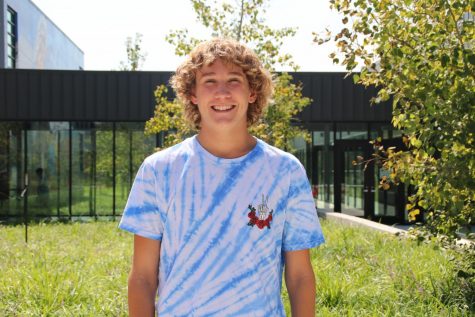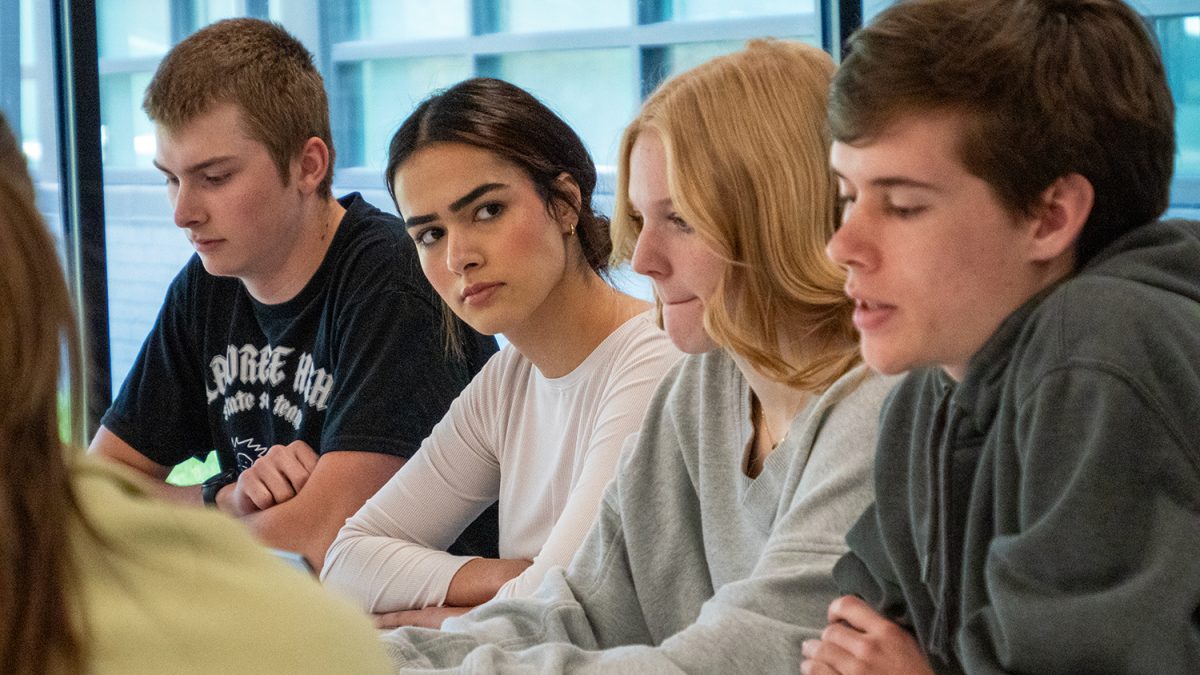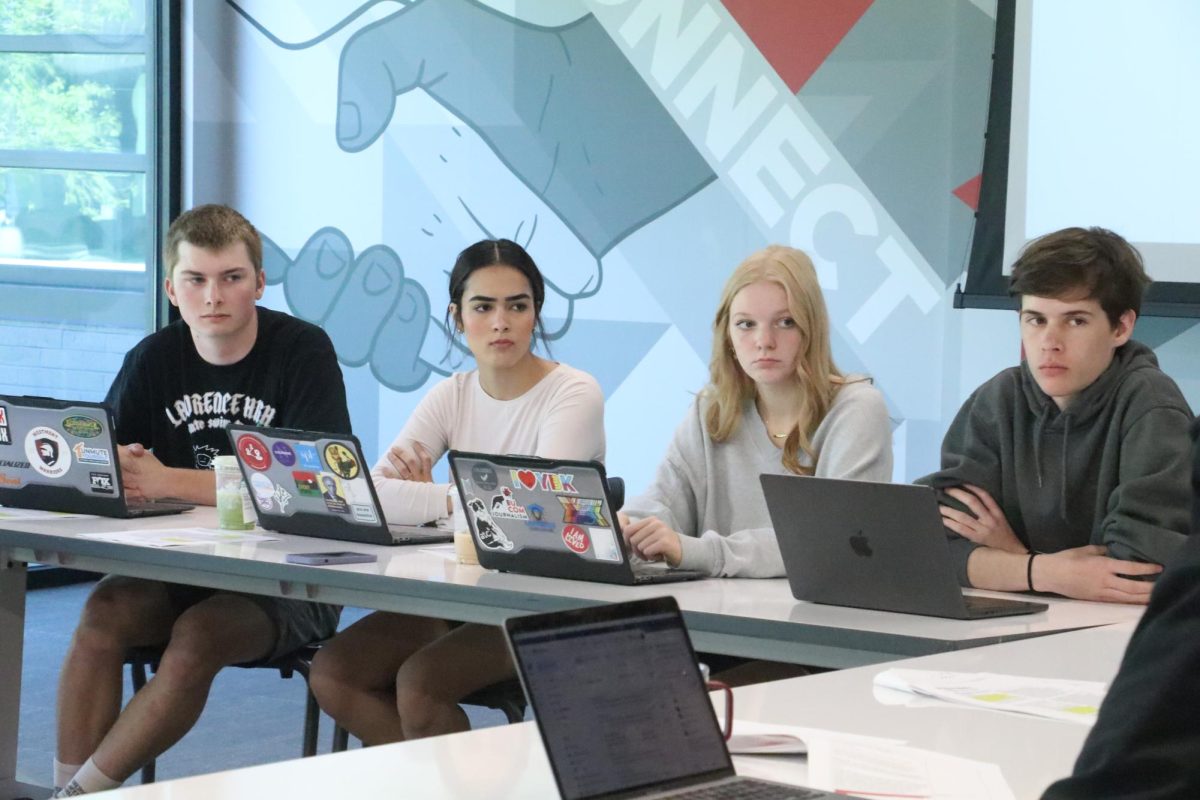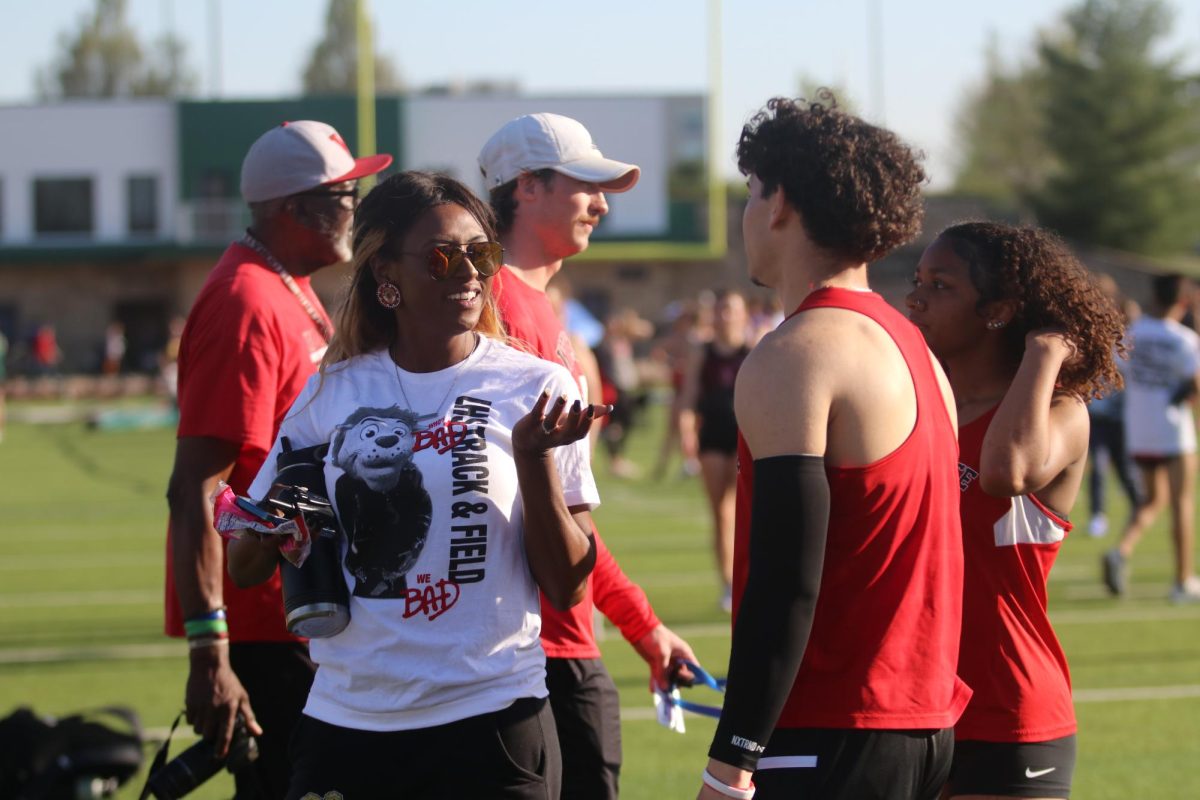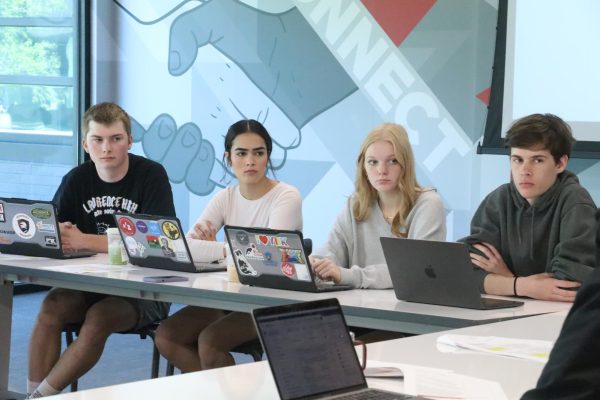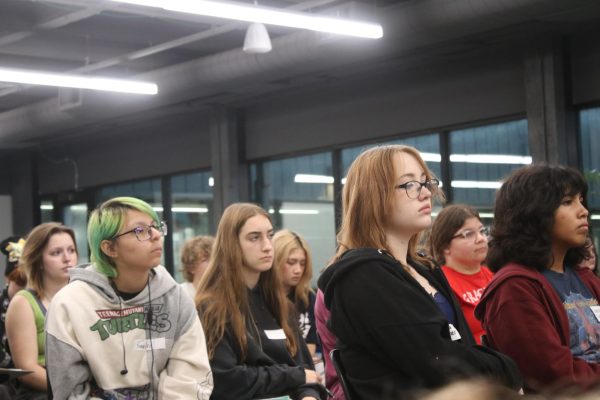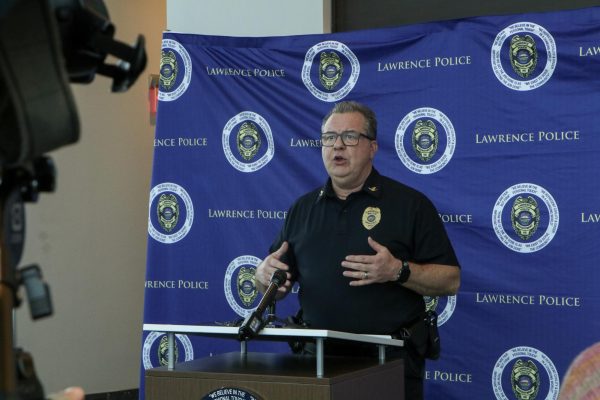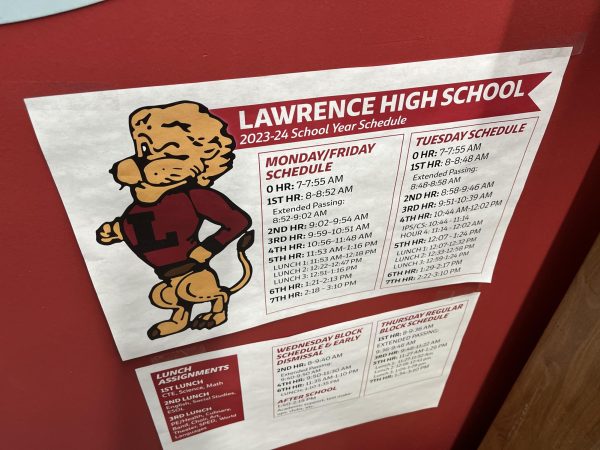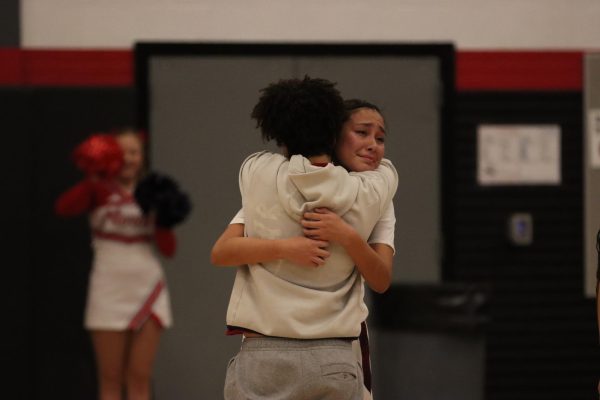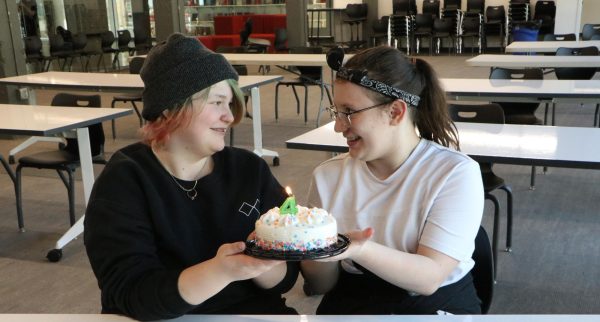Active threat drills affect student’s mental health
While the evidence suggests that active shooter drills can help in a crisis, are they worth the chilling effect on student mental health?
A rise in school threats in the US has put them substantially higher than any other country when it comes to amount of school shootings. This increase has led many to call for stricter gun regulations in the US.
March 1, 2022
After a school shooter took the lives of four students in Oxford, Michigan on Nov. 30, many high school students, staff and parents began asking questions that have been repeated by members of school communities for years.
Why did this happen? What could have prevented it? What’s next?
Yet months after the incident occurred, many continue to question the efficacy, effects and sustainability of the current model for active shooter prevention and preparation in high schools.
Everytown, a non-profit that advocates for gun safety, said the United States had 149 incidents of gunfire on school grounds in 2021, leading to 32 deaths and 94 injuries.
Since 2009, the USA has had over 200 incidents classified as school shootings. The next closest country had two in that same time span.
These numbers, significantly higher than any other country, have sparked an outpouring of support from communities across the USA, and a call for analysis of the efficacy of drills and procedures, as well as analysis as to the adverse effect they could have on students.
Do Drills Work?
Research suggests that lockdown drills are met with mixed success. Reports show that the drills have led to students better knowing how to fulfill classroom functions like turning off lights and locking doors. While other practices, such as staying quiet and out of sight, have had less success, especially in younger age groups.
While the drills are certainly not entirely ineffective, new research is showing that there are a few structural issues that challenge the safety protocols. The first is that most school shooters are members of the school. This raises lots of concerns regarding their knowledge of school safety procedures. Many practices in active shooter drills attempt to give the appearance of a deserted classroom. Students turn off the lights and hide silently in corners and closets. Some teachers even have plans to break windows before hiding to give the impression that the class had left. The issue arises that many active shooters would be aware of these practices making them almost entirely ineffective.
Another issue is the implementation of different types of drills. Most students don’t know the difference between drills and can’t use them to form any sort of preparation because they haven’t been informed what exactly they are preparing for beforehand.
“I think they could be beneficial, but the way they are implemented now is not doing much,” junior Tate Landes said. “Sitting in a classroom continuing to do work feels unhelpful. It doesn’t feel very realistic to what it would actually be like.”
Although stories of poorly implemented and terminally ineffective drills have become commonplace across the country, the strategy that USD 497 uses aligns well with most research for effectiveness and safety.
Lawrence High principal Jessica Bassett outlined two main strategies that the school and district take to prevent school threats.
The first set of steps were physical elements that students and staff have become very familiar with. These included ALICE (Alert, Lockdown, Inform, Counter, Evacuate) training, crisis response plans and regular drills, school resource officers and structural changes to the school done during the recent construction project.
The second set of steps were preventative, social components. She listed relationship building, a positive school culture, a social-emotional curriculum and mental health workers as steps to help prevent threats to a safe learning environment.
This sort of dual-track approach is one that has been recommended by experts and backed up by research.
USD 497 Director of Human Resources and Safety Ron May praised the use of ALICE drills as an effective way to prepare for an assortment of situations that could arise during an active intruder situation.
“The philosophy of ALICE is a much more effective strategy than using lockdown only, which we call “hide and hope,” he said.
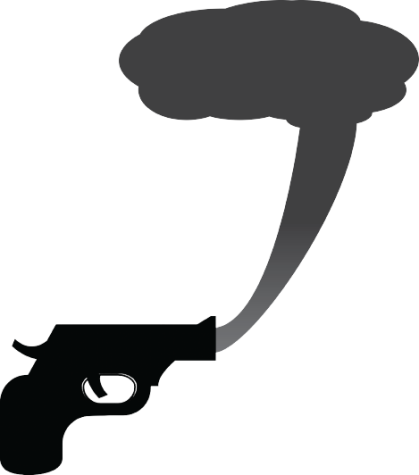
Alongside the use of ALICE, he talked about how the district intentionally alters its instruction based on age level.
“We try to differentiate the drills based on ages and abilities,” May said. “We have purchased a number of books from the ALICE company called “I’m Not Scared, I’m Prepared,” for use at the primary levels. This book helps students understand that sometimes there are situations where we have to be quiet and really listen and follow the directions of the teacher. As students get older, we open up a little bit more about the severity of situations, and what their options are.”
May furthered his claims by explaining how the training is not only helpful in schools but can be applicable to any situation where a threat could be present, like bars, churches and concerts.
“The protocols we teach are applicable to any setting,” May said. “I have staff members relate to me stories of when they have had to take some form of action in a public place, and they referred to their training.”
There are certain issues that can challenge the efficacy of active shooter drills, but in May’s eyes, even if it isn’t perfect, preparation saves lives.
“After the fire in 1958, fire drills became a requirement,” he said. “Since that time, there haven’t been any school fire deaths. Having a plan and practicing it saves lives.”
How do drills affect mental health?
After the Columbine massacre in 1999, schools began to implement crisis drills at varying levels to help prevent and prepare for future emergencies.
Years later, those drills have proliferated rapidly, with nearly every school in the country engaging in regular lockdown and other active shooter drills.
Just recently groups started to speak out fearing that the drills may have some adverse effects on the mental health of students and staff.
How can schools quantify the issue enough to adequately prepare students without causing unbearable anxiety and stress?
A study done by Everytown and Georgia Tech found shocking results regarding the mental health effects of active shooter drills. They analyzed social media posts 90 days before and after a drill.
The study found 40% increases in both stress and anxiety, as well as depression following the drills. Surprisingly, the study also found these results were strongest in High Schoolers, with increases in stress reaching over 50%.
The acknowledged reality of an active shooter in high schools was one of the biggest reasons for these high numbers. Although school shootings account for less than one percent of US gun deaths, high schoolers showed very high concern regarding the risk of a school shooting. They described a mindset shift from the question of if an event would ever happen to when it will happen, one that is detrimental to students’ mental health. Students no longer know that school shootings could happen, they expect them, and are waiting for the moment their training will have to be used.
This brings out another important question: preparing students is important, but how can schools quantify the issue enough to adequately prepare students without causing unbearable anxiety and stress?
Bassett implored students to use the resources available to them if they ever had concerns about the drills and to reach out to the administration and student services if they had questions.
“We don’t want to cause anxiety or trauma for our students or staff. We know that preparation saves lives,” Bassett said. “Knowing the potential risks, we can manage them while preparing our students and staff for emergencies. Lawrence High has confidence in our capable mental health team and staff to be a source of strength and assistance for our students and staff if concerns arise as a result of our safety drills.”
Horrifying stories from across the country have been released of students not being informed that lockdowns are drills, leading to immense terror and panic with lasting consequences, as well as teachers being shot in the back with rubber pellets, leaving them with bruises.
The stories spread all the way down to kindergarten classrooms across the country where nursery rhymes are rewritten to the theme of school shooting lockdowns and procedures, painting chilling imagery in classrooms meant to educate young children.
Similar incidents have been present in the USD 497 district where a lack of information turned situations worse than they actually were.
In 2019, a lockdown at Liberty Memorial Central Middle School led to panicked responses from students and parents due to a lack of information. Although no active intruder was in the building students were informed ALICE protocols were being taken. The lack of communication led to a parent smashing a window to rescue kids. Although the lockdown was followed with instructions to resume a normal school day, many students did not attend the rest of the day to recover from the experience.
But overall, USD 497 has made it a priority to avoid the types of drills they feel could be most harmful to students’ mental health.
“I believe any emergency drill can have adverse effects on students’ mental health,” May said. “The idea of an emergency drill is to prepare oneself for something very bad that could potentially happen in the future, and that can be taxing on anybody’s mental health. There are some school districts who plan out very elaborate active intruder drills and may include smoke, first responders, firing blanks, etc. We have chosen not to train students this way because we do feel these could potentially do more harm than good.”
But even though USD 497 has taken steps to avoid the blunt of possible mental health effects, the issue is still prevalent in the district.
“Yes, it allows for students to be aware and better prepared but you can never be fully prepared for a crisis but, for some students, it causes anxiety and other concerns like panic attacks,” Lawrence High social worker Lynisha Thomas said. “We’ve had students that we’ve removed from the building during drills because they could not handle it.”
Even though Thomas has had hands-on experience with the traumatic possibility of active intruder drills, she still recognizes that sad reality that makes them necessary.
“I prefer the drills to happen than to not have them,” she said. “This is unfortunately how we have to respond to our world these days.”
May said that communication is crucial to preventing adverse mental health effects in students when drills inevitably happen.
“I feel that we can ease a lot of anxiety by communicating our intentions well ahead of time, having a good plan and talking about strategies,” he said.
They help less with a feeling of security than one of helplessness. It gives a plan in case of the situation but it doesn’t give a solution.
— Abe Roman, Junior
What’s next?
With all of this information, the question remains, what should schools do to best prepare students without harming their mental health?
Experts suggest that the answer, while not crystal clear, includes multiple avenues to rethink how to handle active shooter crises and responses in schools.
The first is targeting the root cause of what causes school shooting threats. Where drills and protocol training assess what people should do after a threat, some methods have been researched to decrease the risk of a threat in the first place.
Research suggests one of the leading causes of violence perpetrated by students is bullying and mental health deterioration. Setting up programs meant to aid students’ social connections is one of the biggest preemptive steps schools can take to help prevent safety threats. This information also highlights the worries of active shooter drills that are poorly implemented as being counterproductive due to the mental health strain they can cause students. What is meant to protect schools may actually be a factor that causes the safety threats in the first place by causing anxiety and depression spikes in students.
Creating strong support communities and relationships has been touted as one of the best ways to prevent school shootings.
Some students felt that the current training was very focused on a response to a threat, while the method is taken for reducing the risk of the threat in the first place has been less clear or absent entirely.
“They help less with a feeling of security than one of helplessness,” junior Abe Roman said. “It gives a plan in case of the situation but it doesn’t give a solution.”
A viral TikTok made by a USD 497 teacher that called out this lack of preemptive reform in favor of supplies for use in an emergency went viral nationally last school year.
Another method for reducing school shooting threats has been advocated on a national level: stricter regulations on weapon sales.
After a school shooting in Parkland, Florida, people across the country rallied for stricter gun restrictions to help protect students, including walkouts at LHS.
The protest groups were left unhappy with the underwhelming responses and lack of comprehensive reform.
Just last month a school shooting in Oxford, Michigan that brought gun violence in schools back into the national spotlight was followed by the arrest of the shooter’s parents, due to negligence in stopping the incident.
In an ideal world, active shooter drills wouldn’t be necessary at schools. Yet the threat persists, thus, the task becomes to find the most effective and least detrimental way to implement drills in schools.
Everytown proposes multiple steps that would help aid in creating a more effective and less detrimental active shooter drill process.
Without comprehensive gun control, the burden has been left on schools to prepare and prevent mass killings at school.
They suggest drills should not mimic or appear to be an actual shooting event. Drills should instead go through the processes and teach students how to complete the safety steps necessary. Creating simulation environments, or worse, crafting an actual fake shooting has not been proven to do anything but cause trauma in students and staff.
The second set of recommendations has to do with the information. They request that parents be notified of a drill’s date and contents, as well as alerting students and staff prior to the start of a drill.
Everytown also includes requirements for drill content and collaboration with school mental health workers.
Schools are for learning. Their primary purpose has and always will be to educate students. But, without comprehensive gun control, the burden has been left on schools to prepare and prevent mass killings at schools.
This burden shouldn’t rest on their shoulders, but it’s been left there. Using methods that are most effective to prepare students and staff, while taking into account their safety and mental health, will be instrumental in keeping schools as safe as possible.
Because at the end of every active shooter drill, the intercom rings out with a voice saying the drill is over. At the end of the simulation of one of the scariest moments imaginable, students still have a math test next hour and an English essay due next week.





